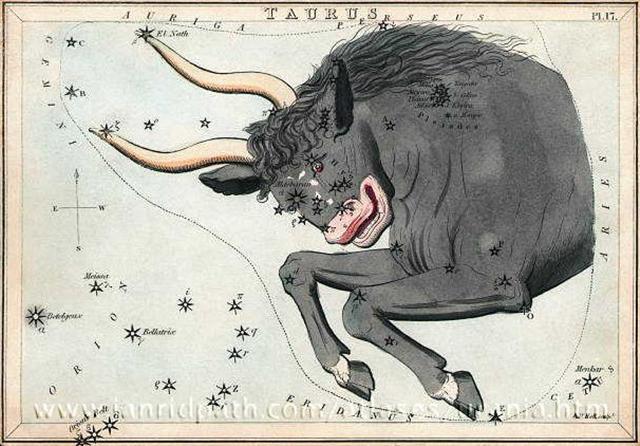1. My monotonous work with compiling Stars, Glyphs, Dates made room for some parallel more imaginative thoughts: I have become convinced those who created the structure which is described on the front side of the G tablet knew the Gregorian calendar. I also believe they knew the important role the heliacal rising of Taurus once had had as a sign of spring. Maybe we in Ga1-1 should imagine the horns of a bull (pars pro toto) emerging from a 'curve' in time:
With spring equinox (north of the equator) nowadays coming 148 - 80 = 68 days earlier than the once heliacal rising of Aldebaran we can estimate Taurus would have been at spring equinox around 68 * 72 = ca 4900 years ago, which agrees rather well with our wellknown figure below :
The drawing shows how the hind quarter of the Bull is cut off by the rump of Aries around 1800 B.C. When no longer the front part (horns and head) of the Bull were positioned at equinox the image must in principle have lost its role. We can therefore understand why Taurus is depticed only as half a bull:
The tip of the higher horn is at Elnath, which evidently was at spring equinox around 4000 B.C. Let's check this date:
80.9 * 72 = ca 5825 years ago. Some (84.0 - 80.9) * 72 = ca 220 years earlier it had been the tip of the lower horn, Heavenly Gate (ζ Tauri), which was at equionx. According to my reading of the G text this star was rising heliacally in June 13 (day 164 from January 1). The summer year would once have begun at Heavenly Gate, which might explain moe (a sign of awakening). Moving ahead in the G text we evidently will go deeper and deeper into the past. Therefore we could read the end of side b backwards as a description of how after the end of the Bull, beginning with Aries, the old system gradually broke down. |





